
To make it easier to navigate the vast variety of herbaceous perennials, I think it is worth breaking them for themselves into groups. My classification (not Botanical) does not claim to be the ultimate truth. This is just the beginning of the path in the knowledge of plants. Perhaps, each of you will have your own way, I will just offer you my approach, I hope it will help you:
- Architectural plants or, as they are called, bold plants, stand out immediately, because it is impossible not to notice the huge burdock and the height of the sunflower white-leaved, the power of the Eupatorium and openwork clouds of the Crambe cordifolia. All of them have a memorable shape, which usually looks good on the ground, early in the morning and late in the evening, in the fog and rain, summer and autumn.
- Vertical and horizontal — more simply: the first is trending up, reminding us of the Gothic cathedrals, the second wish you peace and takes us to a quiet water surface. As complete opposites, well mixes between themselves.
- The most unexpected group is the ’smoke’. Gentle creatures that create an atmosphere of lightness and airiness in the garden, bringing air and freshness. As elusive and fleeting as a blush on the cheeks and Shine in the eyes.
The classification is not new. Many of you who are familiar with Piet Oudolf’s work have separated plants into umbrellas, spades, balls, candles and daisies. But still more interesting to go your way and to understand the plants, because the only way you can get to know each other better.
Today I will present you one plant of each group.
Architectural Crambe cordifolia
Don’t tell me that blooming Crambe cordifolia likes you more than a withered and strewn with beads. I agree: the first-festive, elegant, but predictable…
And the second-an unusual, mysterious, forcing us to reflect on how we do not know the plants, do not know how they can lead themselves and in what form to appear before us the next minute.

Once I was just conquered by the ability of the Crambe cordifolia in the faded state to adapt to other plants and take their colors. Monarda ‘Aquarius’ and Crambe cordifolia – what could be better in August, when bright colors are already tired?
I am sure that the Crambe cordifolia is suitable for the” bride’s garden”, the same white as the wedding dress. In this he can help astilbe and bells, roses and Centranthus, onions and daffodils. Around the Crambe cordifolia can be planted finely onion Crocus.
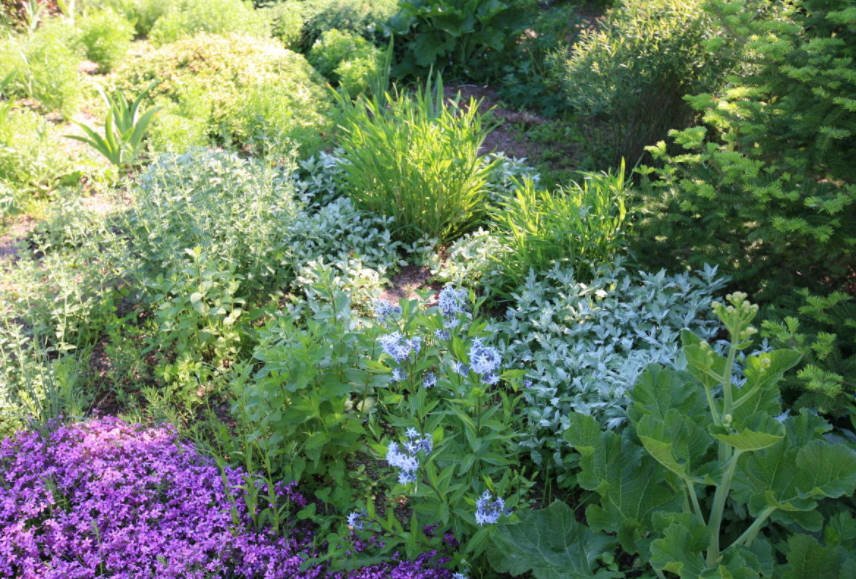
Long autumn, which has already become traditional, prompted me another application of the Katran, or rather, its huge leaves, which can be used as a litter for the falling autumn foliage.
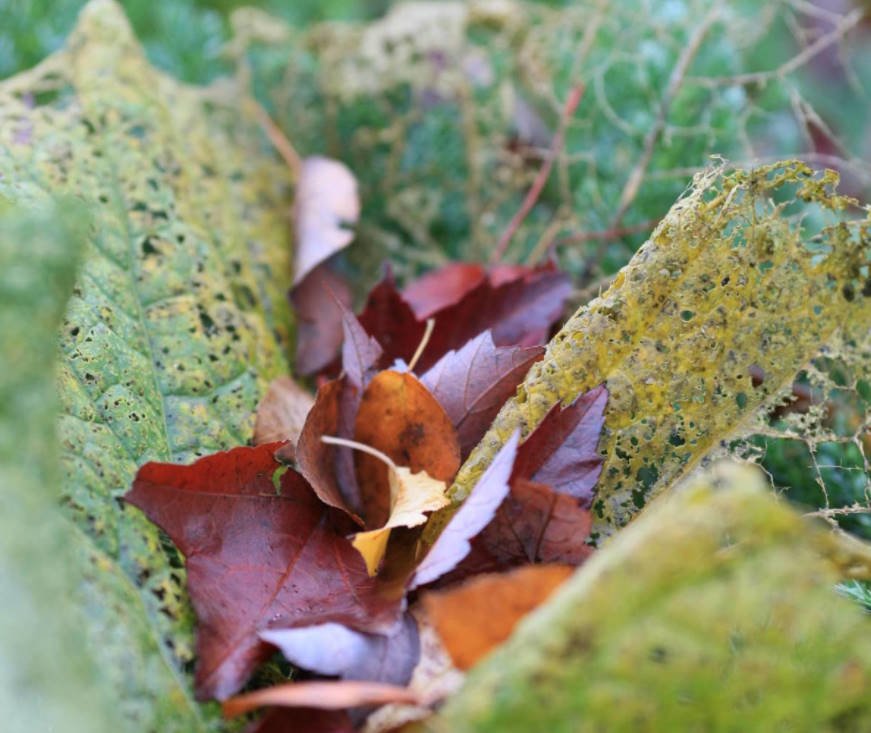
The famous French garden Villandry has a “cloud Garden”, populated by all kinds of plants white-blue-gray color and smoky texture. It is easy to guess that Katran occupies one of the honorable places there.
Of course, this plant requires a lot of space, and it is more interesting if your flower garden will be not one, but at least three copies of the Crambe cordifolia, which can decorate the garden in June. I can say that Crambe cordifolia is good in the front flower beds, it’s beautiful and soars above the rose ‘Lavender Dream’, beautiful in the company of Eryngium and geraniums. But the greatest pleasure he brings me during flowering ‘E. C. Buxton’. Turns out some incredible amount of sunlight emitted from chamomile, picked up by the catamaran and scattered around the garden.
Very often I put Crambe cordifolia with Thalictrum , and despite the fact that he and the other form a haze, they do not compete, not to find out “who is the fairest of them all”, and complement each other, enveloping the garden in a gentle cloud of various fawn tones, smoothly flowing from white to pink, to form a purple haze. It is remarkable that, even fading, Duo Thalictrum and catamarans retains the interest.
In some cases, for the Crambe cordifolia still need to put a support. This will have to resort if you want to keep the Bush intact throughout the season and crop only in the fall. These little worries shouldn’t scare you. Always remember the effect you can get.
Vertical: Liatris spicata “Alba”
In the world of plants: the upstart is a very correct attitude, equally beneficial to both the plants and us, growers and spectators.
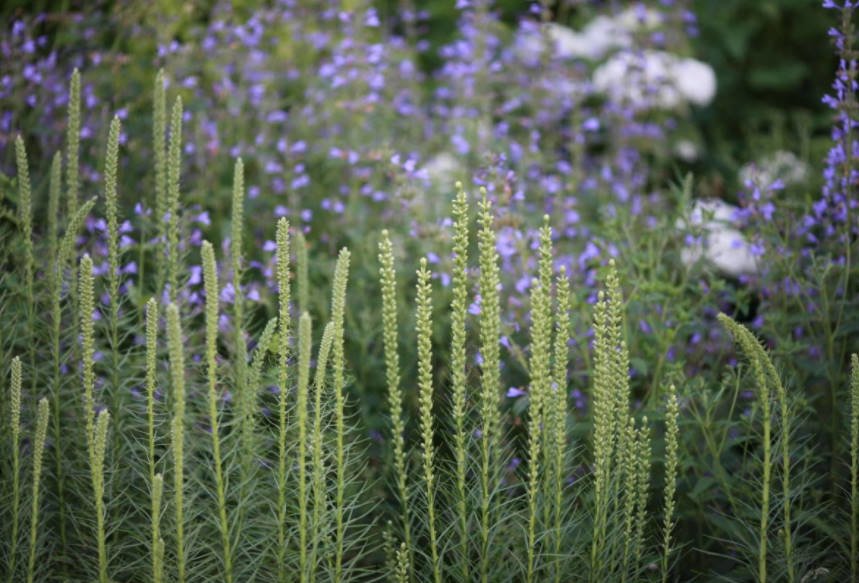
You can, of course, to hide the magnificent “forest” of vertical liatris in the middle of the border, leaving to view only the top, but it’s so boring. It is much more interesting to show the plant in all its glory, especially when there is something to show. Vertical growth from any plant, flower, bloom all but from the top down. One-hundred-percent upstart!
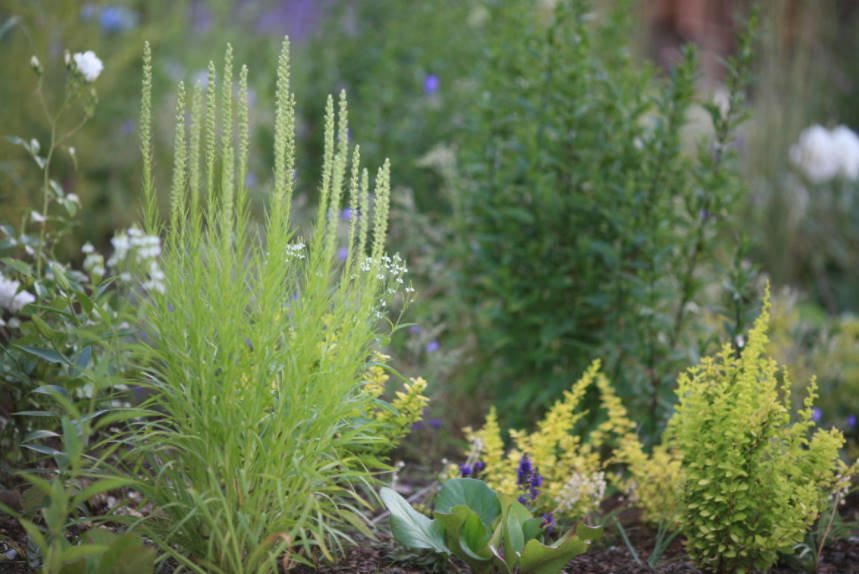
It is this dissimilarity allows us to combine liatris with many different plants. Imagine how good it will be with roses in the “garden of the bride”, or with the Eupatorium, or, for example, with a variety of white bows.
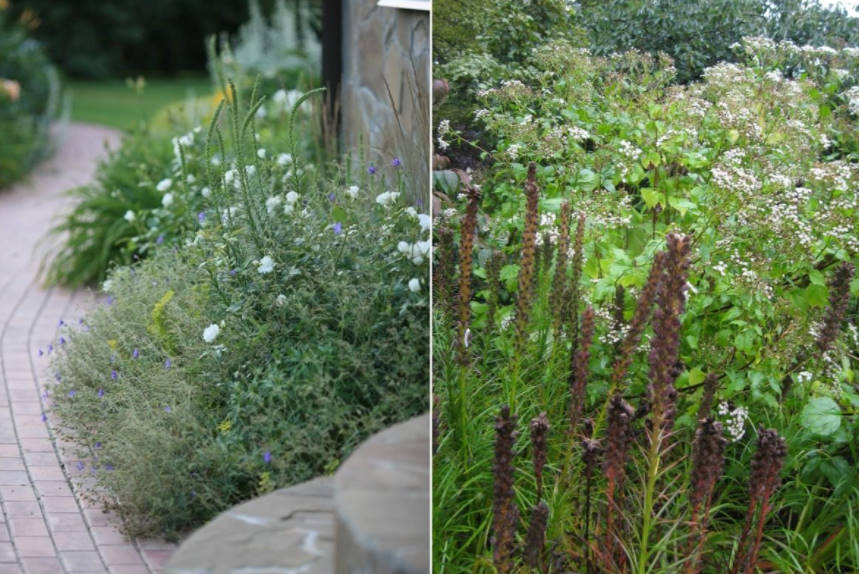
We should also not forget about the magical transformation of liatris late in the autumn, when the inflorescence becomes brown, and the leaves acquire reddish shades. I have much admired it as liatris in the autumn and Bressingham, where it was planted next to the Eupatorium wrinkled.
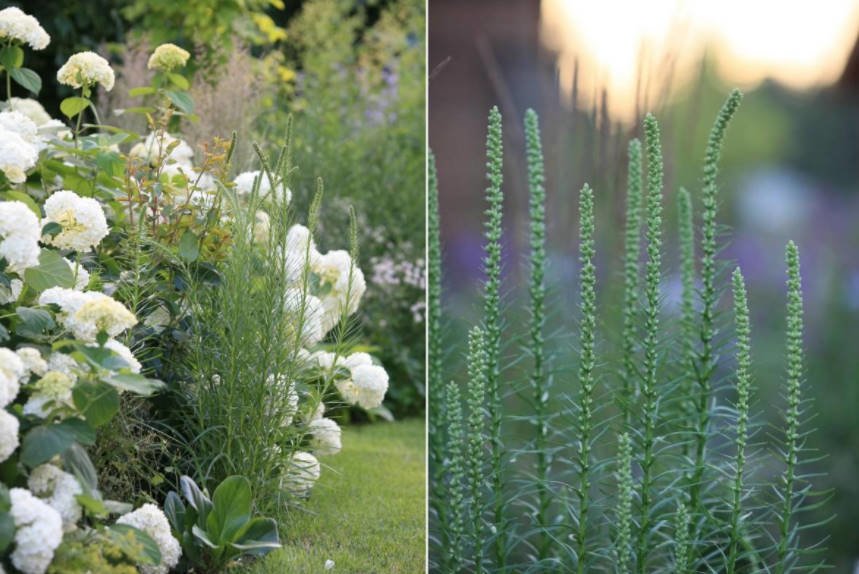
And best of all, with cereals on the background of the sunset!
Smoke: Pimpinella major ‘Rosea’
It just so happened that Pimpinella major ‘Rosea’ always tries to climb forward to show off in the foreground of the flower garden. I must admit, not only allow it, but even welcome.
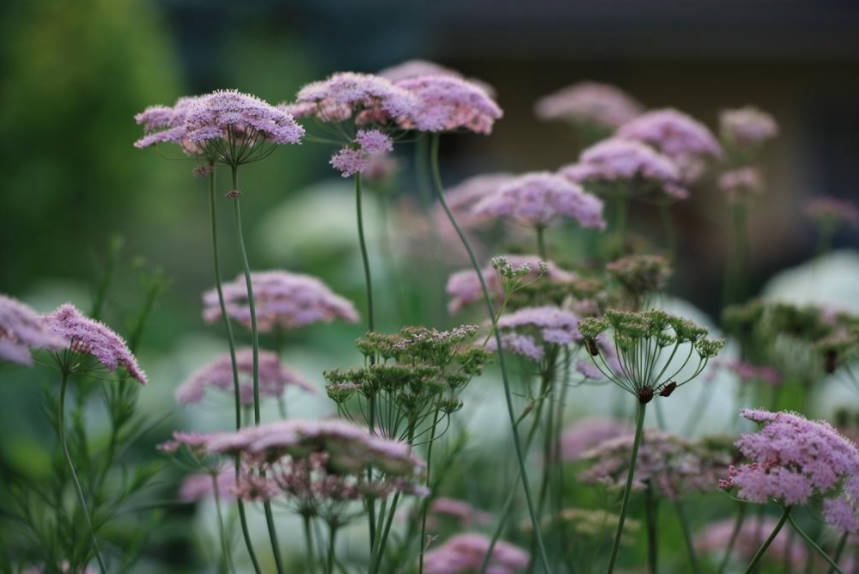
If we want to get the long – awaited pink cloud in July, enveloping all the neighbors-first of all, you need to decide what to plant it.
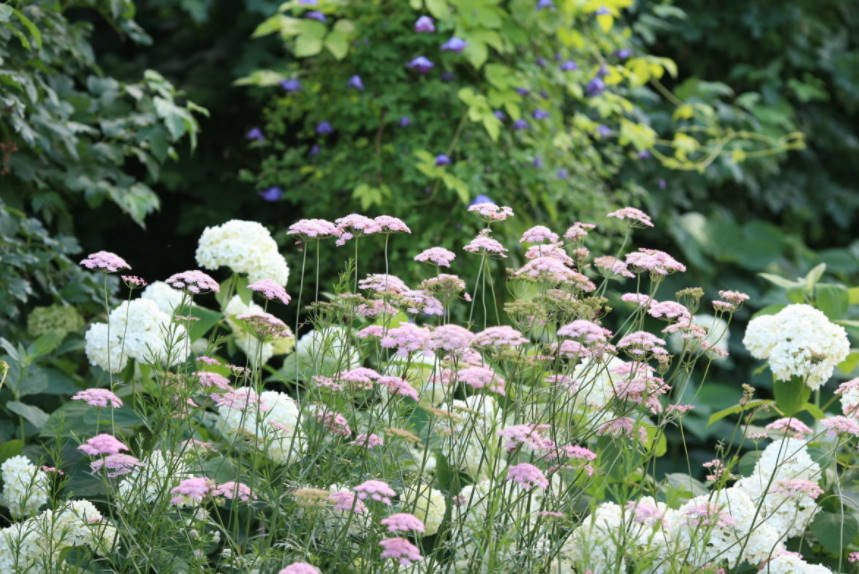
Block planting in this case is less interesting: its foliage is not the most attractive among their own kind, it is a little aggressive, creeping, non – structural-there are problems. So meksem and are not afraid of strange, seemingly inexplicable combinations. It is also good everywhere and with everyone. I planted it in the rose garden, in the front flower garden, and with cereals. Of course, to obtain the smoky effect, I often used the so-called “smoky trio”: Astrantia major, Pimpernella major and Aster ‘Pink Star’. As you probably guessed, each plant is responsible for its season, so that the effect of haze is maintained constantly. For example, on another site, Astra was replaced by Helon and the result was quite different. Not worse, but different.
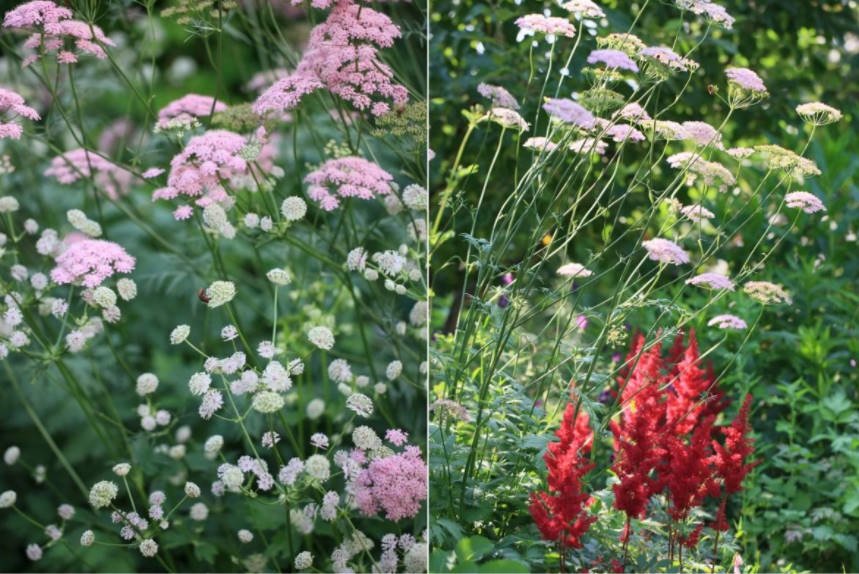
And I like how it behaves with Polemonium(also because the plant is the first half of the summer). First thriving Polemonium, then trimmed, and by July we have a wonderful mounds of foliage that declines your wither umbrellas Pimpernel. Do not be amiss to plant and Astrantia. You can also play with shades of blue, taking, for example, various bells, sage, small testes and Eryngium , and as a light haze – femur. Another version of the composition with the thigh: mixed with ‘Baby Doll ‘and in the neighborhood on the one hand and geranium ’Patricia’ on the other. Although there is another contender for the high rank of “best partner of the Pimpinella” – it is also a little aggressive, it is also a plant for natural gardens, also from the series of “weeds”. We are talking about the pink Epilobium ‘Stahl Rose’.
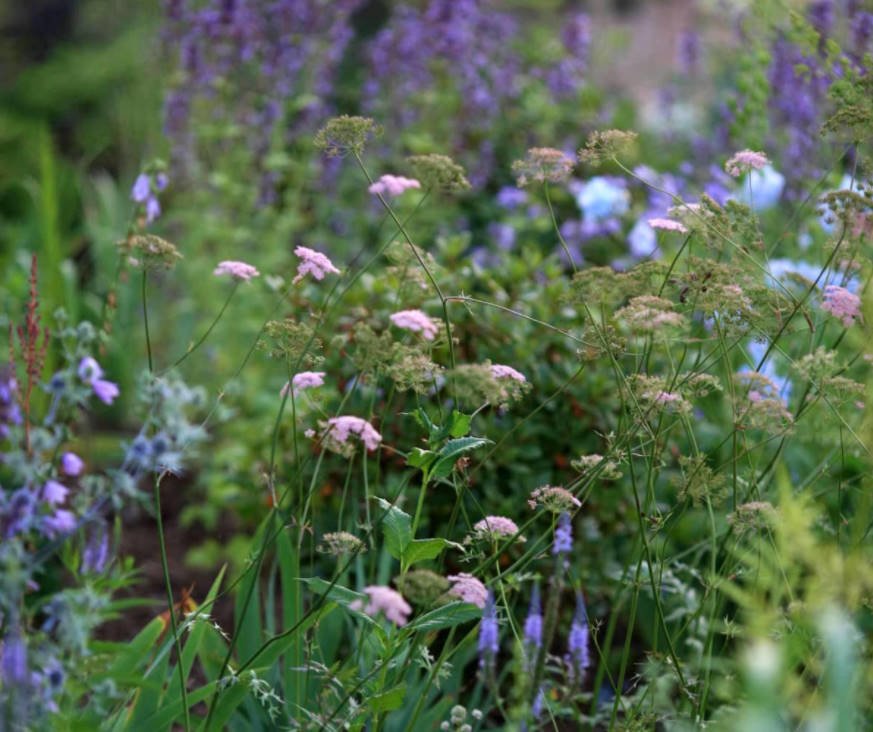
Once I planted another ceremonial flower garden, and the femur became a companion and unifying element for the collection of bearded irises. After all, who but he could so effectively shut them ugly leaves. And, of course, my dream is to make a meadow with a mass of Pimpinella to the pink cloud to the horizon. That’s where the handy pink Epilobium .
Horizontal: Monarda hybrida ‘Aquarius’
Hotel for insects needs a decent design, and better monarda plants can not find, especially if the hotel is five-star, and monarda varieties ‘Aquarius’. The appeal of this Monard lies in the purple color, so gentle and changeable, binding the most unexpected colors, able to become a necessary addition, and sometimes the main thing in the composition.

Monarda in the company of physical strategy can rule the ball in the flower garden, despite the obvious aggressive qualities of both. But to refuse this pleasure is impossible, just every three years it is necessary to divide the plants. Monarda is beautiful in a duet with Lythrum ‘Swirl’. This couple I will use more than once. Quite naturally to her appearance in “purple” garden.
A great sequel to the flowering of a collection of lilacs after they will be just green until October. Lilac, being a favorite of all gardeners, easily transfer their powers to the monarch, which many do not recognize.
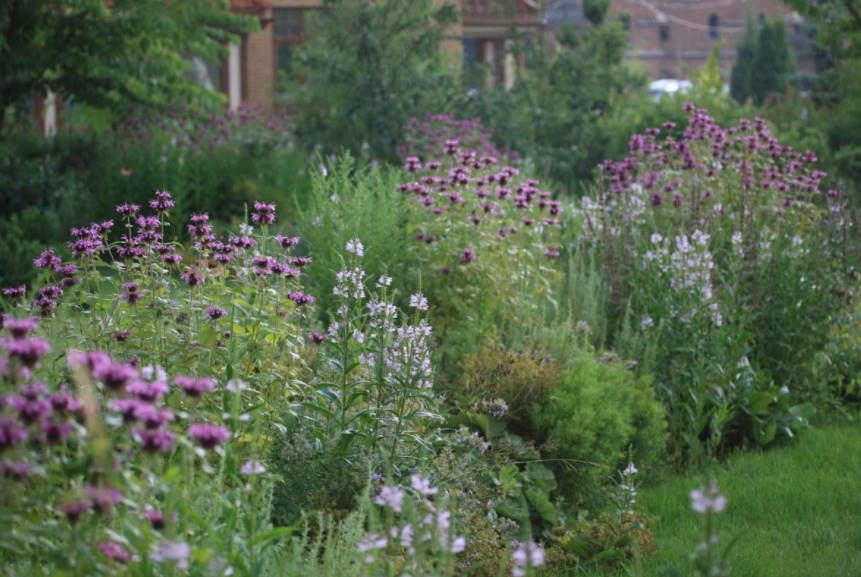
So, seeing in the garden a forest of dried Monard, stood for the whole winter and early spring looking just for five plus, my client immediately asked to add “these balls” in the cereal flower garden. Well, what else variety will look like against the background of willow silver – only ‘Aquarius’!
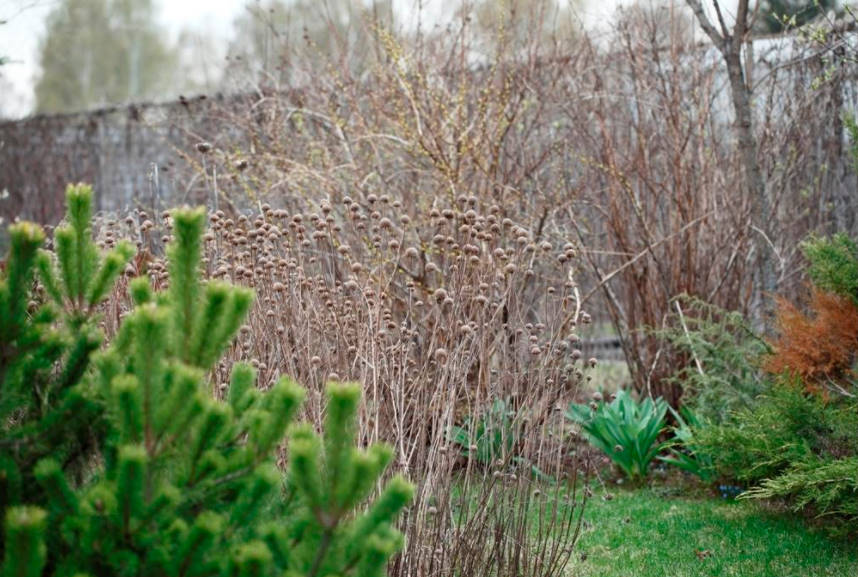
Of course, the seed heads of monarda – one of its main advantages.

And they become interesting in August, when fall purple petals, but retained the color of the” buttons”, looking quite bright against the background of bright Anaphalis and gray Stachys, well, flowering Viola cornuta reminds that before the end of the season is still far away…
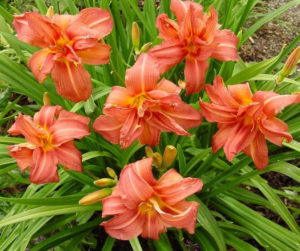
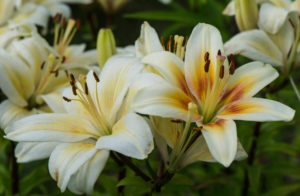
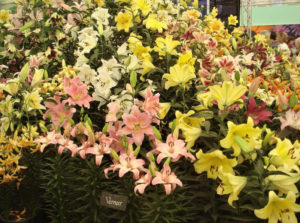

Leave a Reply